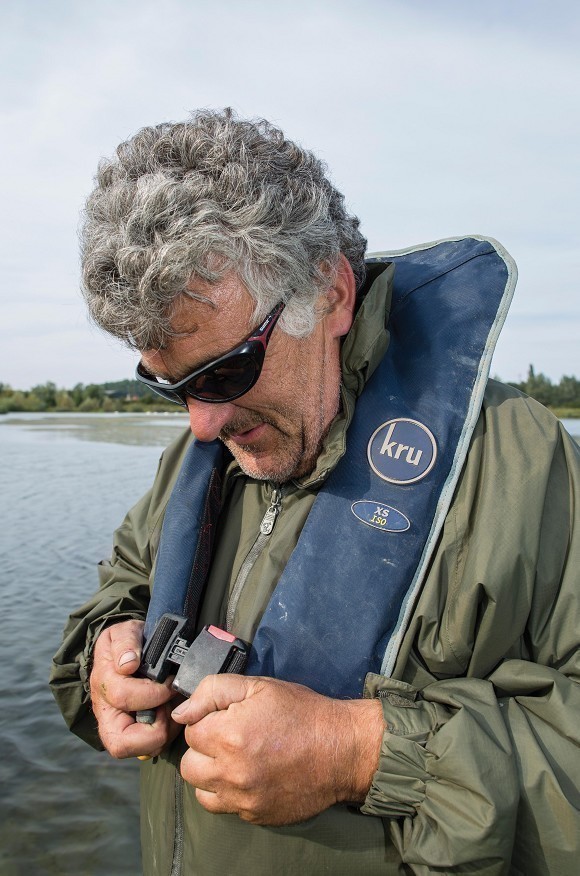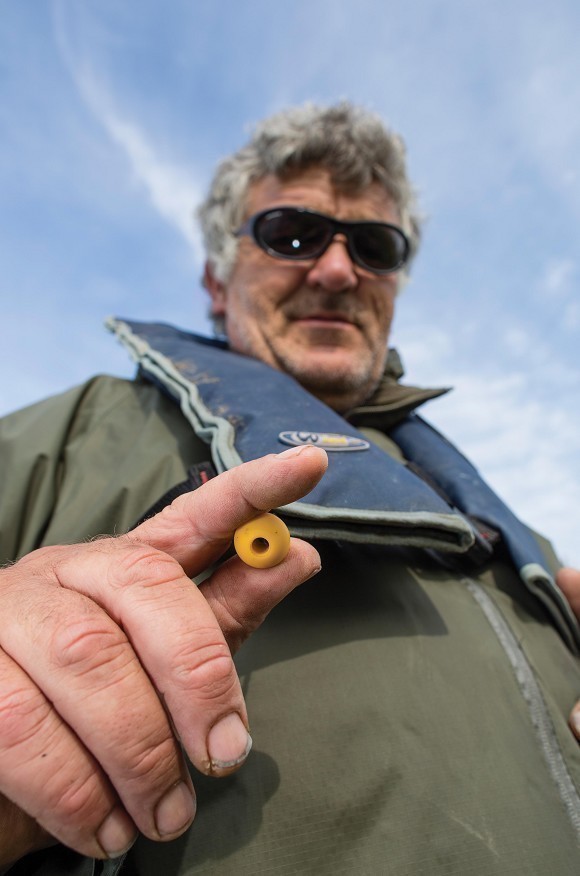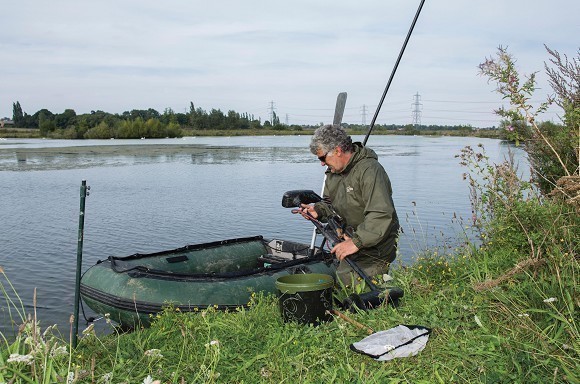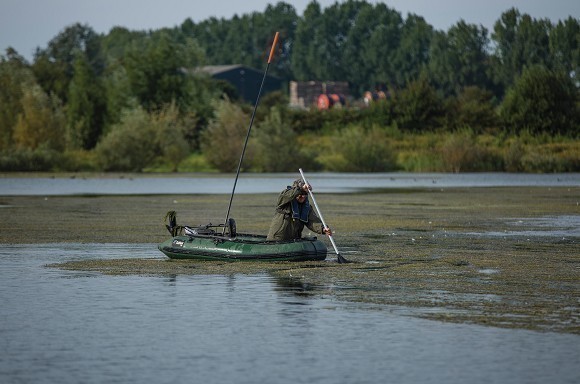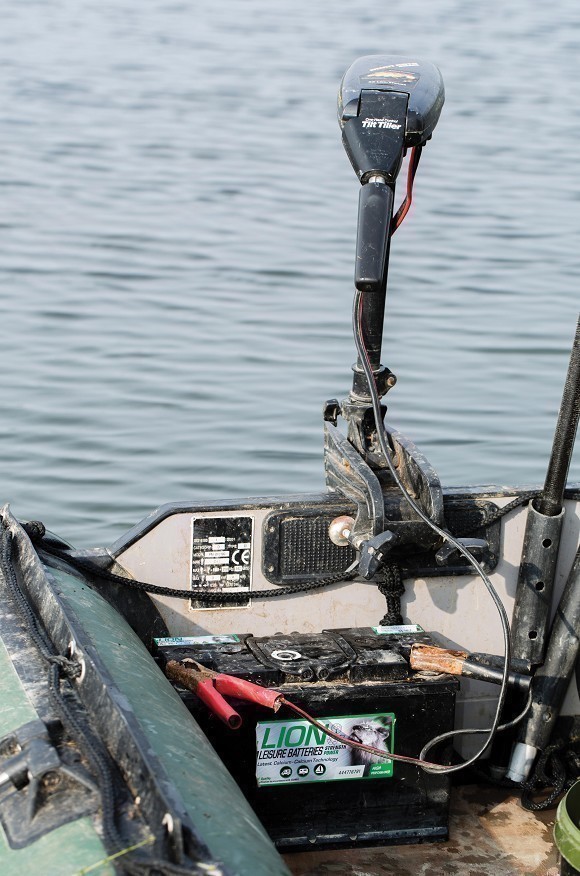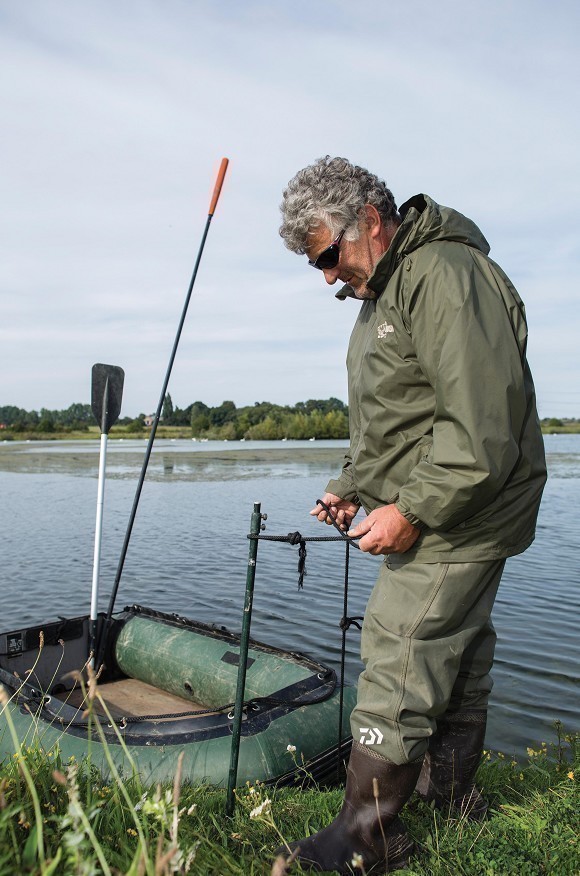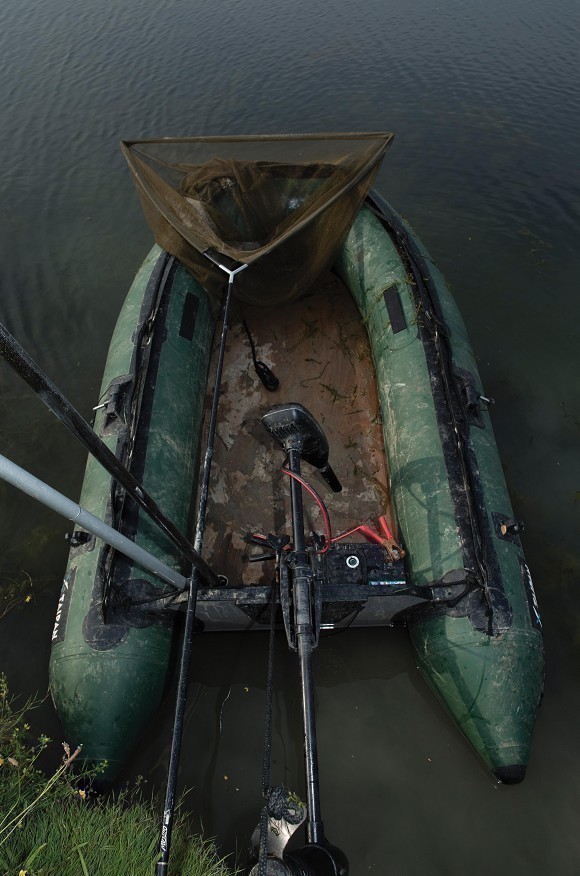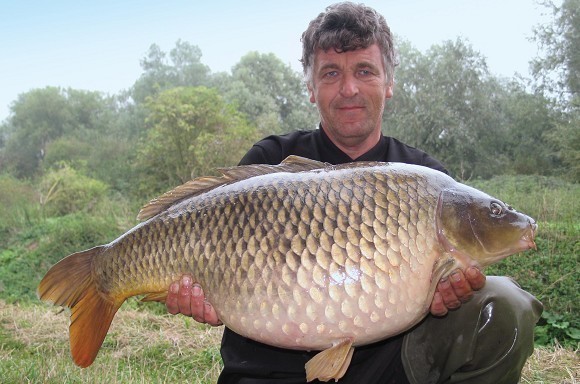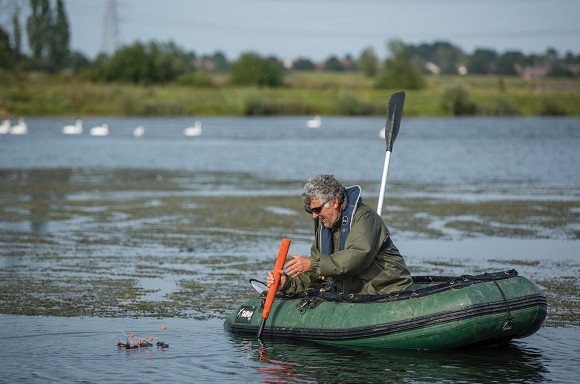
Everything you need to know about using a boat
Boat expert, Gary Bayes gives us the lowdown on boat safety
Most accidents are a result of doing something we already know we shouldn’t have; the same applies to boating. It isn’t hard to be safe, and even the most inexperienced boaters soon pick it up from what I’ve seen on all the waters I’ve boated on. Fishery owners who have weedy or snaggy lakes should allow boats, or better still, provide them for the safety of their own fish. One boat costs less than replacing a tethered-to-die twenty-pound-plus carp. I will not have any syndicate member pulling for a break and whenever anyone has joined my lake saying they don’t agree or won’t go out to save a fish they are told they will or not get the ticket. It is also less than the cost of one 20-pound carp to get the right insurance. If you put the correct rules in, do a little tuition if needed and make sure your members are responsible, it can only improve your fishery, safety for the fish and the anglers.
Life jackets
No. 1 rule has to be life jackets – and they really need to be the type that inflate on immersion. I use both pull cord and self-inflating. Most of the time I use the self-inflating but for day work, wading and when there is really heavy rain I use the pull cord type. I check all three of my life jackets each spring by inflating them. I used to use buoyancy aids but they are not as good and wouldn’t pop you to the surface in really weedy conditions. They are also bulky and hot in the summer so for safety’s sake I’m enforcing the anglers on my lake to use self-inflating jackets. It doesn’t matter how good you are at swimming, hit the water in the cold, get stuck under weed or blackout somehow and you’re gone. My insurance insists on life jackets, they will know best from experience…
No. 2 rule is securely fastening your life jacket and making sure it’s a good fit. I know of two instances where anglers have popped out of their life jackets and very nearly drowned, one didn’t clip his waist strap up; the other had an ill-fitting buoyancy aid without a crutch strap that popped off over his head.
Both the above rules will keep you alive should you have an incident. In my mind, anyone not using a life jacket is being irresponsible to their family and the other anglers allowed to use a boat on the lake. I’ve had to discipline anglers on my lake and wouldn’t think twice about grassing anyone up on other lakes; I’m protecting my own fishing. It’s really easy to forget to put your life jacket on, especially in the heat of the moment should you have to go out to a weeded fish. I leave my life jackets on the boat so it’s almost in the way so I don’t forget it.
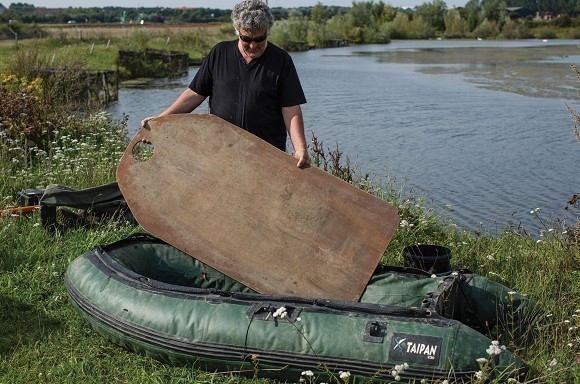 Spread the weight with a solid board, cut to the tightest fit. I have to put the board in with the tubes half-inflated
Spread the weight with a solid board, cut to the tightest fit. I have to put the board in with the tubes half-inflatedBoats
I prefer to use three chamber inflatables for my fishing. They fit in the van easily, pump up fairly quickly, are very stable and can carry good weights of tackle and bait. Some lakes provide boats – I had to use one the other week to free a fish from a snag, which was a bendy, very unstable thing without suitable floats that would have definitely sunk if loaded with tackle or used wrong. The only solid boats I would use are the twin skinned BiCs or similar. I’ve got six of them chained up on my lakes with only the syndicate members having keys to access them. They are chained up to stop trespassers using them; in this day and age it would be misconstrued as my fault should a trespasser drown even illegally using one of my boats.
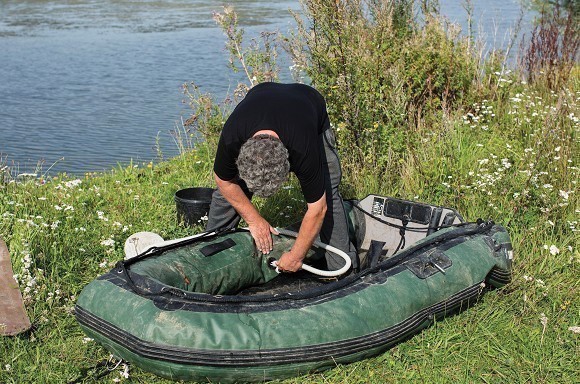 I only use three chamber dinghies. Pump the front chamber up first and then the sides as this spreads the air around the tubes more evenly
I only use three chamber dinghies. Pump the front chamber up first and then the sides as this spreads the air around the tubes more evenlyDinghies
A lot of small dinghies come with either slats or very hard to fit bottoms to spread the weight over a greater surface which spreads the stress on the seal between the tubes and the bottom. Dinghies with soft bottoms are not safe. For fishing, especially with heavy boat batteries and bait buckets I now cut a plywood base, which is easier to fit and after wearing my old boat out that had slats, spreads the weight out better. It’s an extra bit of kit but it is better than slats and means you can throw away the hard-to-fit bottom the boat might come with. I do use the hard bottom my 13ft dinghy came with but that has a 15-horse outboard and needs a different kind of strength.
I’ve already said all dinghies should have three chambers, so if one is compromised there is still a lot of buoyancy left. I checked this years ago at Fen, in shallow water holding one of the valves in. Even bouncing the boat a bit to get as much air out as possible my fully-loaded dinghy held me and all my tackle up.
Motors
I use Minn Kota outboard electric motors; I do think they are the best although my nephew Neil uses a much cheaper motor that seems very good, but always get the highest thrust you can, it makes a big difference in heavy winds; I use 55-pound thrust motors. You do need to sort out the widest propeller you can for weedy waters though, I just bought a new Minn Kota and the propeller it came with was hopeless in weed so I had to get the wider one.
Oars
Even if you have a motor always take an oar with you. Even my old motor with the best weed propeller can’t get through the thickest weedbeds. Some boats come with little oars; I like longer ones with large paddles. I only use one which I row from over the front of the boat; it’s better for looking for spots and easy once you get the hang of it. With a dinghy you can row straighter because you can row over the very front, some hard boats are a bit square shaped so it isn’t as easy and if you kneel right at the front you can take water in. With the lake boat the other week, rowing from the front was really dodgy, especially when towing a net with a fish in it, with my dinghy it’s so much easier.
Batteries
I use the largest leisure batteries, they last a good 8hrs or more depending on use. I usually have two on the boat so I can just swap to the second one when the first loses power. I’ve gone through the skimping, using cheap batteries that let you down on a session so now fork out for the best. They last well over five years if you look after them. I do a lot of rowing over the front of the dinghy to look around the lake or to reach the spot to re-position a rod to save the batteries and approach the areas with more stealth so even on a two-day session often I don’t use half the charge of a battery.
Mooring up
Always secure the boat to the bank securely. I’ve had a few near mishaps where you turn round and the boat is drifting off and one time at Fen I had to swim out to retrieve my boat out of the far bank trees. If you’re fishing on an island it’s even more important. I have mooring points back and front on my boats, using the rear mooring rope the most; it’s easier to have the boat pointing in the right direction to go out to a fish and easier to load the batteries.
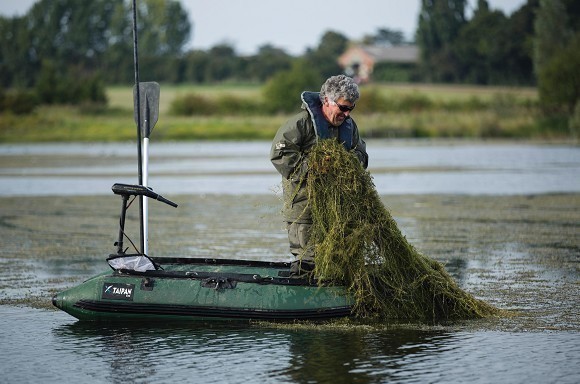 Only stand up on small boats if you are 100% balanced, it’s easier to fall out stood up, almost impossible knelt in the bottom
Only stand up on small boats if you are 100% balanced, it’s easier to fall out stood up, almost impossible knelt in the bottomPlaying fish
I only go in the boat when a fish is snagged, preferring to play them to the bank if possible. The snap-off leads and my general set-up (see page 20) usually makes it possible in reasonably weedy conditions. When I do have to go out I usually pull myself to the fish with the rod. You have to keep the front of the boat forward and pump the rod well back which sort of slips the boat forward, if you don’t pull the rod far enough back it’s hard to pull the boat forward. If there is a massive crosswind or the fish is miles out I engage the motor and crank as fast as I can. Lock the motor in the forward position and steer the boat from the front with the rod. When you get close, steer the boat to the up-wind side of the line and reach back to turn the motor off.
I always kneel near the front to get out to a fish and play it, it’s safer but some prefer to stand in the boat.
Normally with my rods I can put enough pressure on to pop the fish out of the weed but occasionally have to revert to hand-lining. You have to be very careful hand-lining to not get tangles so I keep the rod in front of me laying across the boat and wind in any slack I gain as I go. I usually hand-line from the side of the boat to apply more pressure. The thing is to take your time. Normally once the fish is free I get the rod back into action, it’s a real bitch hand-lining fish into a net, on the boat or on the bank.
Don’t use any side strain, it spins the boat; always play the fish over the front of the boat, especially in wind, in my case that’s where the net is ready. Try to keep the net dry until the last moment, it’s easier to handle.
Landing fish
I always go out to land snagged fish on my own, some like to go out two up in the boat but I find that to crowded. I always use 6ft landing net poles, some like short ones in a boat but I don’t get the short landing net pole thing; if it was better on a boat it would be better on the bank surely? The long pole makes it easier to net the fish using the side or end of the boat as a pivot point to lift the mesh and to put the netted fish behind the boat, sit on the pole and row back to shore. I have used the motor, lifting the fish into the boat onto a mat but think they are better off in the water. Just make sure not to tow them backwards and make sure the line in the net is slack.
And finally...
So, using boats for fishing is perfectly safe, if you do it responsibly. It’s up to the angler or the fishery owners to what level boats can be used. I’ve fished lakes where the only boat use is to free snagged or weeded fish. On my lakes the anglers are allowed to have a look around on the boats and due to the seagull colony on the island, bait up by boat too. Normally it’s frowned on to drop hookbaits by boat but in the extreme weed at the moment I allow this.
Whenever I launch on a lake I try to find out where the other anglers are and give them the widest birth possible when motoring to where I want to fish. I do the same when walking around a lake. I had someone boat very near my spots on my last trip, not their fault really, I had spread out a bit and they were really sorry when they realised.
I love using boats in my fishing; boats do catch you more fish in the right situations and the thrill of a good boat battle is really exciting. It makes me smile to hear the stories of other anglers first ‘boat battle’, “towed me halfway round the lake” etc. In reality, as a platform to play fish off, boats are really not hard to pull about, it’s when you get above the fish where you can be the boss, until then the fish is in charge.





